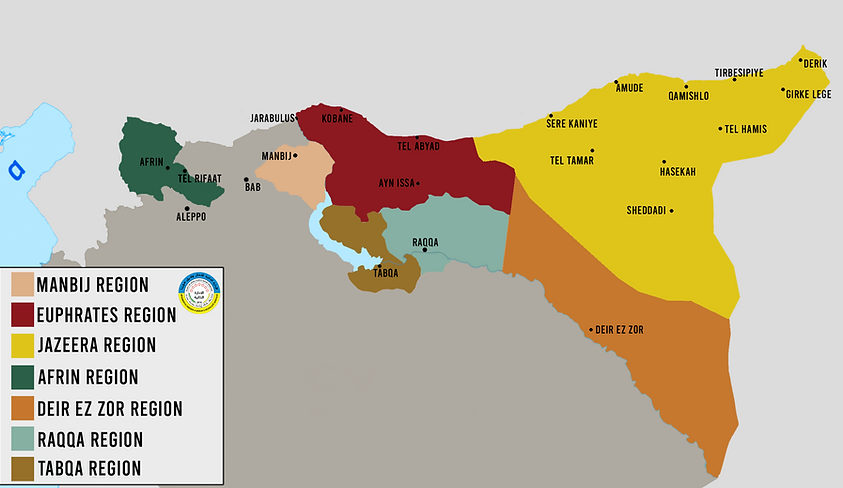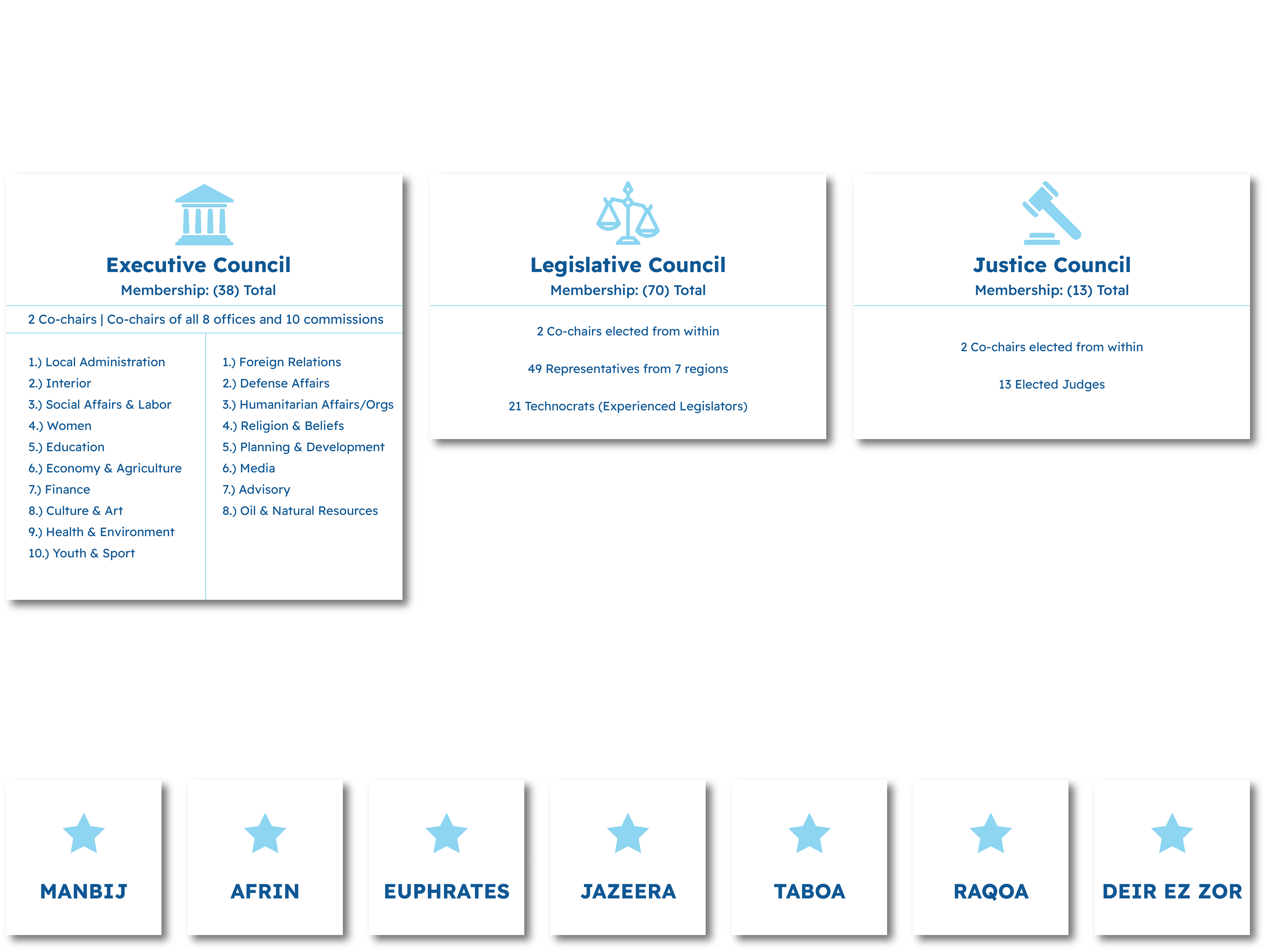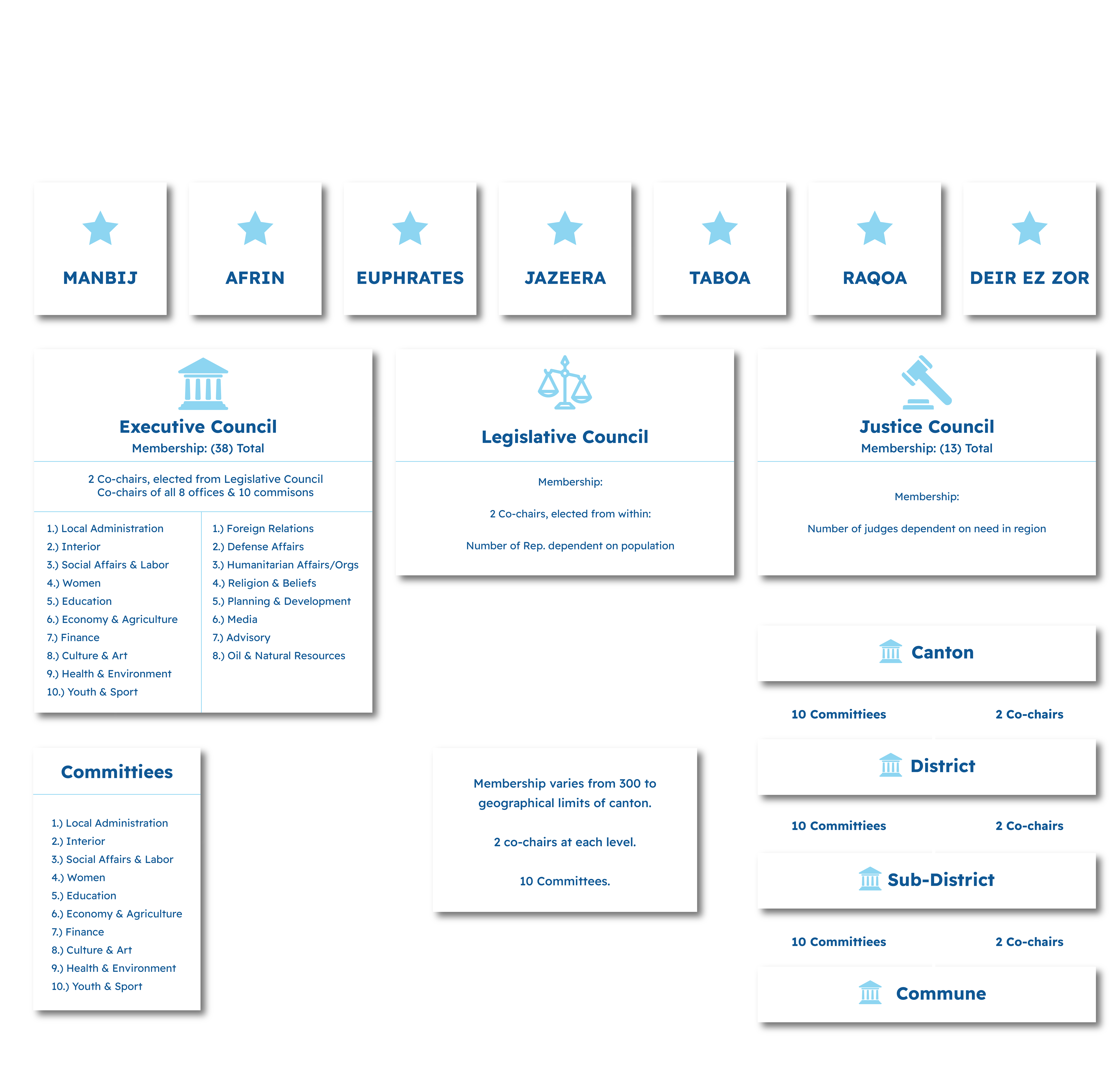Syrian Democratic Council (SDC) – A Syrian led and Syrian owned democratic national framework, that includes societal and political organizations and independent figures that believe in a political system based on democracy, decentralization and gender equality.
Syrian Democratic Forces (SDF) – A multi-ethnic and religious military organization that includes units from the Arab, Kurdish and Christian populations who fought and bled together against the Islamic State of Iraq and Syria (ISIS) to liberate the regions of AANES.
Commissions vs. Committees – Commissions are standardized at the Autonomous and Regional level. The only difference is some of the tasks and authorities. From the Canton to the Commune level, the same organizations are referred to as committees and not commissions.
Equal Gender Representation – This is the practice of ensuring 50% participation of women in all aspects of government.
Co-Charing System – It is a practice where every leadership position from civil society, government and military ensure there is a man and a woman sharing the same decision making responsibility.
Democratic Confederal System of Women (DCSW) – It is an organized network of inter-related women institutions in civil society and government to create a more powerful support and voice for women throughout the AANES.
Communal Economy – It refers to the practices of organizing economy based on justice and equity in the distribution of income and wealth, creating equal job opportunities, providing social and health insurance for all individuals, eliminating monopoly, and achieving self-sufficiency by supporting and funding cooperatives and small-scale developmental projects.




